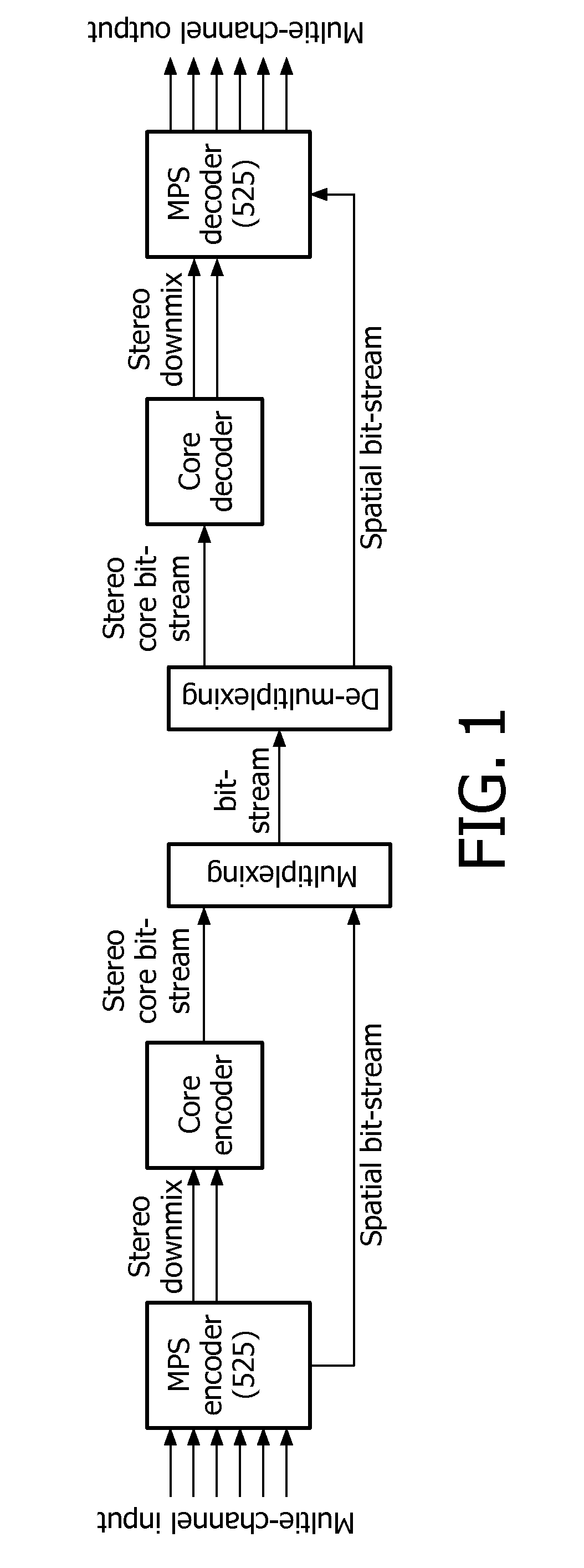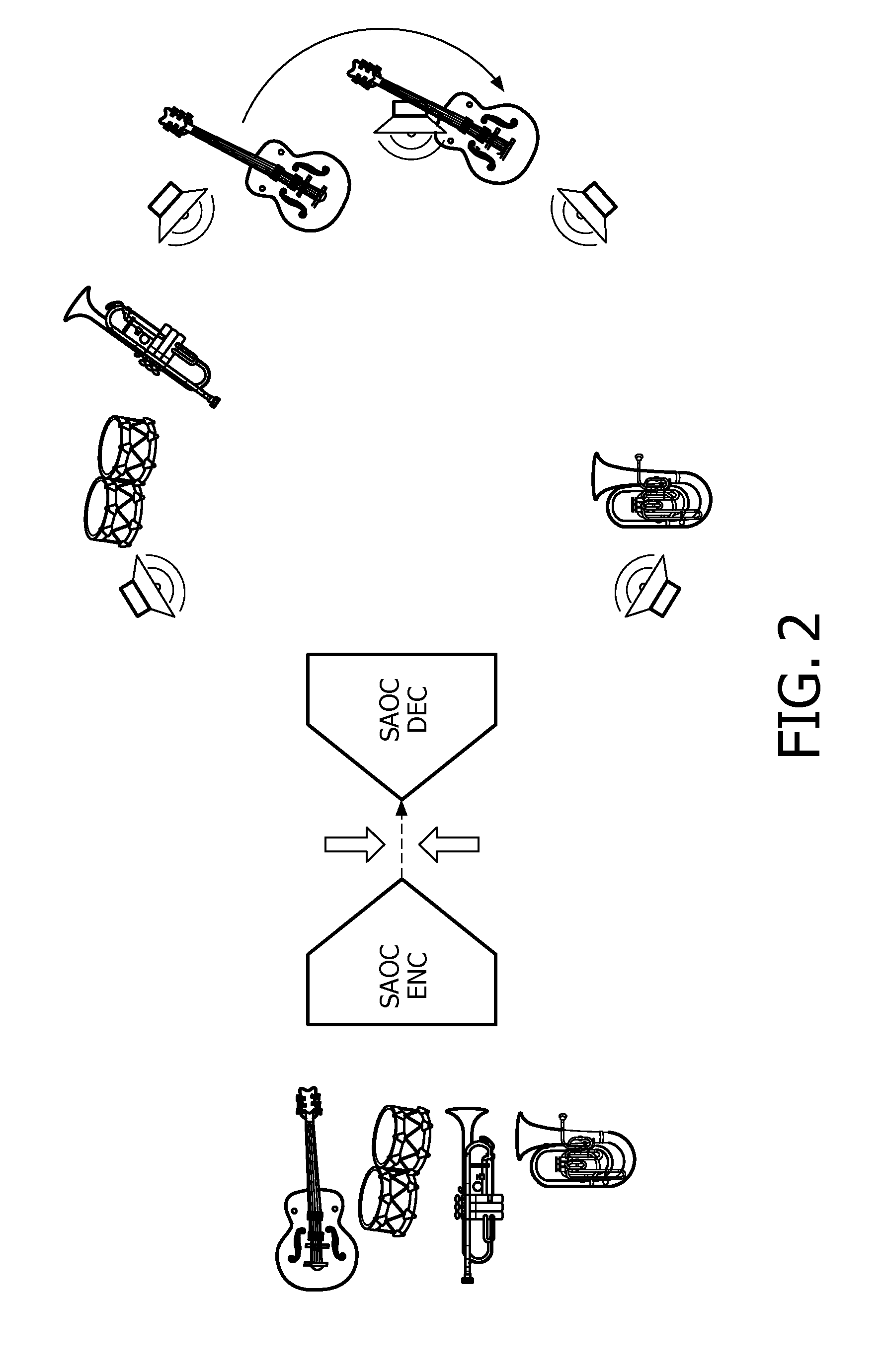Spatial audio rendering and encoding
a technology of spatial audio and encoding, applied in the field of spatial audio rendering and/or encoding, can solve the problems of inability to faithfully render diffuse signal components, inability of channel based audio coding systems to cope with a different number of speakers, and inability to provide normative means to transmit audio scenes, etc., to achieve advantageous diffuse sound rendering, improve user experience, and improve the effect of diffuse sound
- Summary
- Abstract
- Description
- Claims
- Application Information
AI Technical Summary
Benefits of technology
Problems solved by technology
Method used
Image
Examples
Embodiment Construction
[0078]FIG. 5 illustrates an example of an audio rendering system in accordance with some embodiments of the invention. The system comprises a spatial audio encoding device 501 which receives audio information to be encoded. The encoded audio data is transmitted to a spatial audio rendering device 503 via a suitable communication medium 505. The spatial audio rendering device 503 is furthermore coupled to a set of speakers associated with a given spatial speaker configuration.
[0079]The audio data provided to the spatial audio encoding device 501 may be provided in different forms and generated in different ways. For example, the audio data may be audio captured from microphones and / or may be synthetically generated audio such as for example for computer games applications. The audio data may include a number of components that may be encoded as individual audio objects, such as e.g. specific synthetically generated audio objects or microphones arranged to capture a specific audio sou...
PUM
| Property | Measurement | Unit |
|---|---|---|
| angle | aaaaa | aaaaa |
| energy | aaaaa | aaaaa |
| distance | aaaaa | aaaaa |
Abstract
Description
Claims
Application Information
 Login to View More
Login to View More - R&D
- Intellectual Property
- Life Sciences
- Materials
- Tech Scout
- Unparalleled Data Quality
- Higher Quality Content
- 60% Fewer Hallucinations
Browse by: Latest US Patents, China's latest patents, Technical Efficacy Thesaurus, Application Domain, Technology Topic, Popular Technical Reports.
© 2025 PatSnap. All rights reserved.Legal|Privacy policy|Modern Slavery Act Transparency Statement|Sitemap|About US| Contact US: help@patsnap.com



